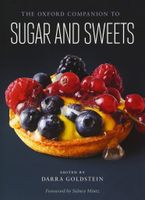Fruit cheese is a thick fruit paste, often set into a mold and presented as a shallow block for cutting, although it may also be set in a jar and either cut or spooned out. Commonly made with quince, apple, damson, gooseberry, or blackberry, fruit cheeses have a relatively high sugar content and an intense fruit flavor, and are usually eaten with hot or cold roasted meats, and sometimes with cheese. They are included in some of the earliest English recipe collections: in Delightes for Ladies (1609) Sir Hugh Plat gives a recipe for a version of plum or damson cheese that involves cooking the fruit to a pulp with rosewater or wine before finishing with sugar and molding. See plat, sir hugh. The basic method for preparing a standard fruit cheese is to chop the fruit and cook it to complete tenderness in a small amount of water, then push it through a sieve to make a smooth, thick pulp. This pulp is then combined with sugar in a ratio of 1 pint (600 milliliters) of pulp to 12–14 ounces (350–400 grams) of sugar. The mixture is gently heated and stirred until the sugar has dissolved, and then cooked, stirring frequently, for an extended period of up to an hour, until a channel is left in the paste when a spoon is drawn through it. Poured when hot into molds or shallow jars, fruit cheese sets firm when cool.


